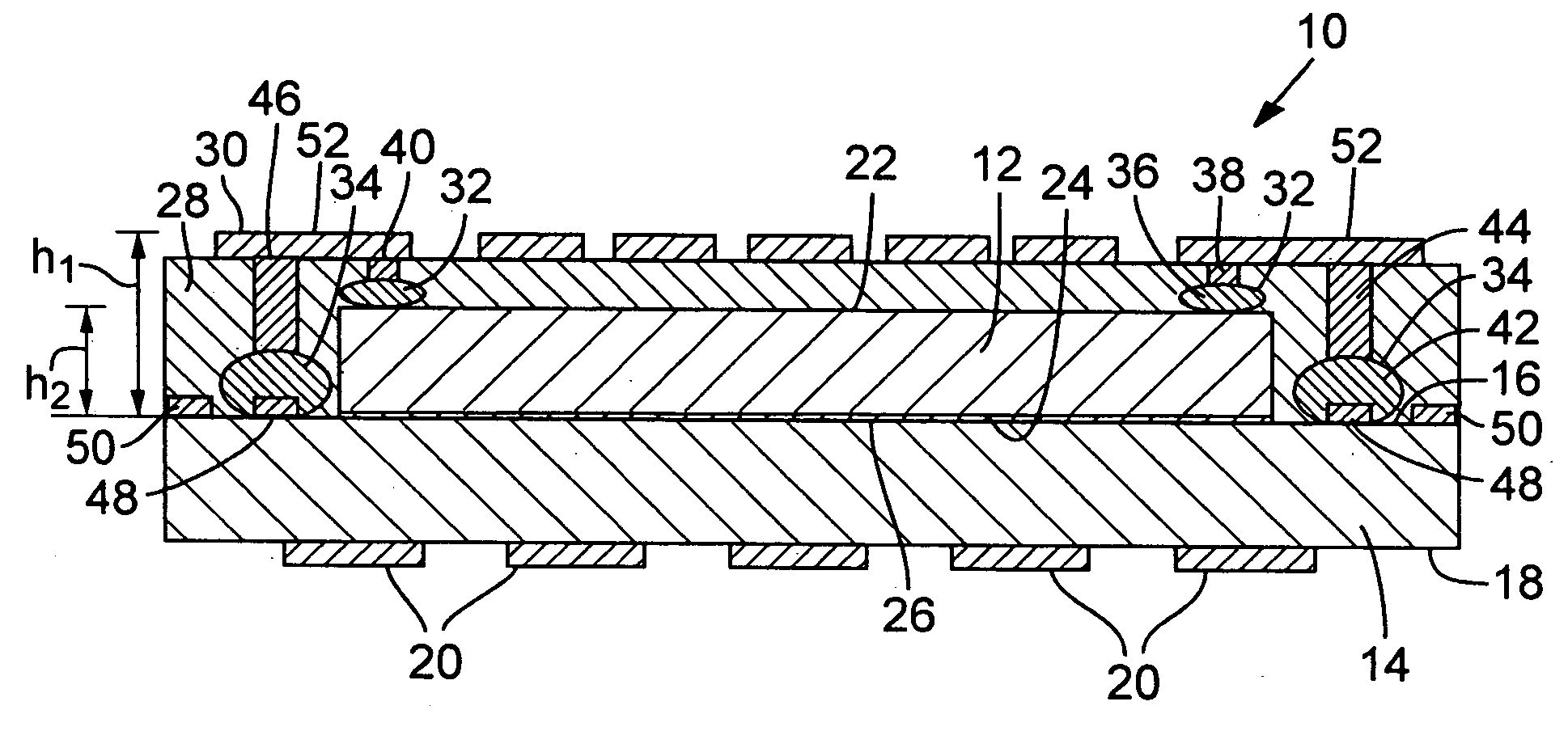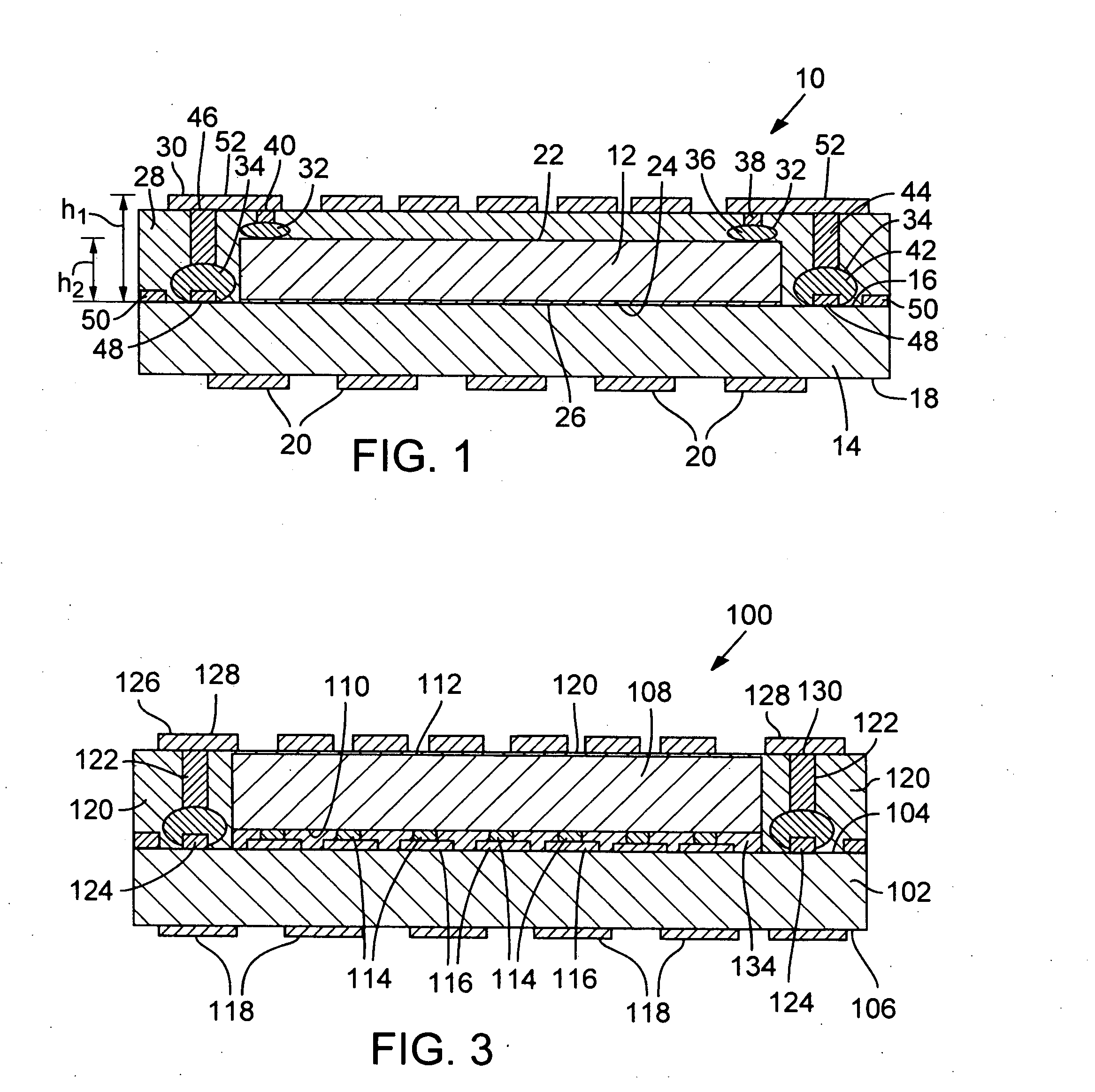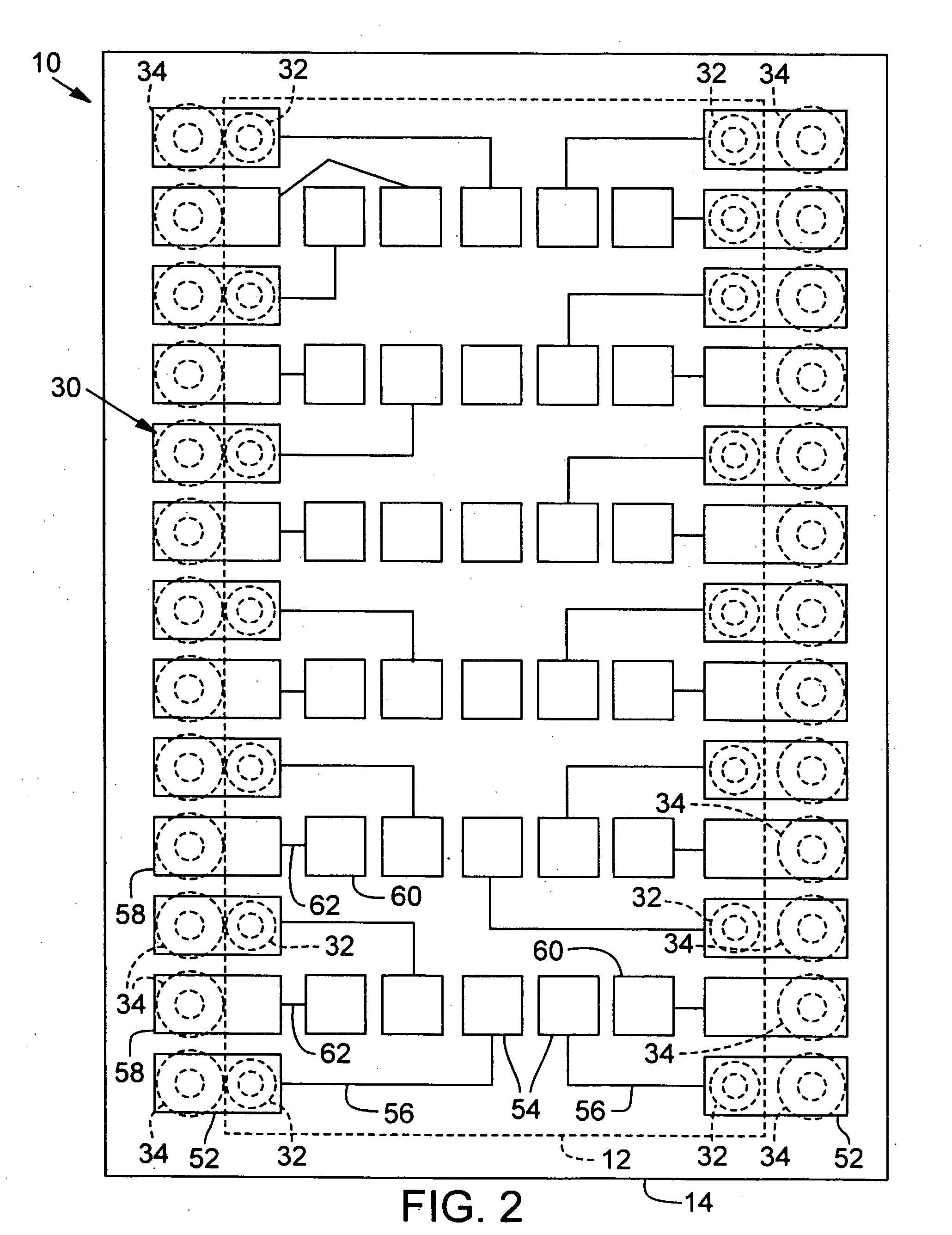Semiconductor package with embedded die
- Summary
- Abstract
- Description
- Claims
- Application Information
AI Technical Summary
Benefits of technology
Problems solved by technology
Method used
Image
Examples
Embodiment Construction
[0024]As used herein, the singular forms “a,”“an,” and “the” refer to one or more than one, unless the context clearly dictates otherwise.
[0025]As used herein, the term “includes” means “comprises.” For example, a device that includes or comprises A and B contains A and B but may optionally contain C or other components other than A and B. A device that includes or comprises A or B may contain A or B or A and B, and optionally one or more other components such as C.
[0026]According to one aspect, the present disclosure concerns embodiments of a semiconductor package employing stud bump interconnections for increased integration in the direction of the z-axis. The semiconductor package can include a die mounted in a face-up configuration (similar to a wire bond package) or in a face-down or flip chip configuration.
[0027]FIG. 1 shows an exemplary embodiment of semiconductor package 10 including at least one die 12 positioned in a face-up configuration on a substrate 14. The die 12 can ...
PUM
 Login to View More
Login to View More Abstract
Description
Claims
Application Information
 Login to View More
Login to View More - Generate Ideas
- Intellectual Property
- Life Sciences
- Materials
- Tech Scout
- Unparalleled Data Quality
- Higher Quality Content
- 60% Fewer Hallucinations
Browse by: Latest US Patents, China's latest patents, Technical Efficacy Thesaurus, Application Domain, Technology Topic, Popular Technical Reports.
© 2025 PatSnap. All rights reserved.Legal|Privacy policy|Modern Slavery Act Transparency Statement|Sitemap|About US| Contact US: help@patsnap.com



